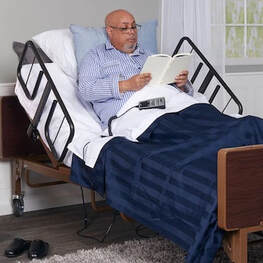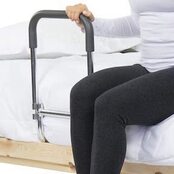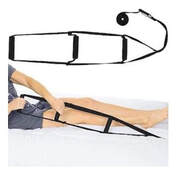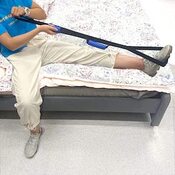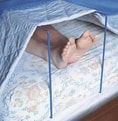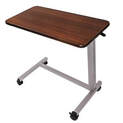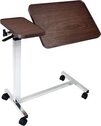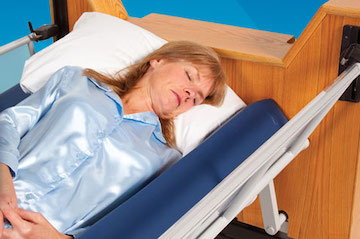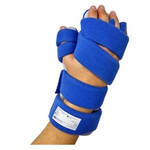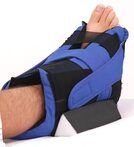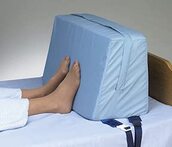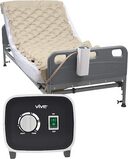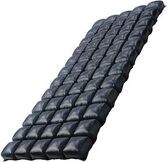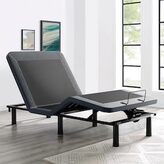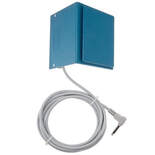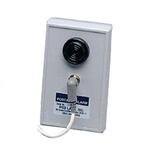|
The sleeping devices on this page are not usually covered by health insurance. You may be able to borrow some devices at no cost from equipment loan closets. We have negotiated exclusive discounts for some products.
|
Exclusive DiscountsEnter promo code YOURALSGUIDE at checkout after adding discounted items to your cart. Learn more |
Hospital Beds
|
Semi-electric hospital beds allow you to raise and lower the head and foot of the bed with a remote control, though the overall bed height must be adjusted with a manual crank. These beds should be covered by insurance as long as you have a face-to-face visit with your doctor and receive medical documentation.
If you find the mattress on your hospital bed uncomfortable, you can try adding a mattress overlay with foam, gel, or air pockets. Or, you could buy a new mattress for the hospital bed frame. |
A fully electric hospital bed can be raised and lowered electronically, though these beds are not covered by insurance. If you need a fully electric bed, ask your durable medical equipment (DME) company if you can pay the difference between the two.
Bed RailAdjustable bedside support that helps you get in and out of bed |
Transfer PoleHandles can provide greater stability when getting in and out of bed |
Bed LadderHas handles that can help you sit up in bed from a lying position |
Leg Lifter StrapDevice that can help you lift your legs onto a bed, couch, or wheelchair |
Blanket Lift BarHolds sheets, blankets, and comforters off legs and feet while sleeping |
Bed WedgeVersatile wedge pillow that can elevate your upper or lower body |
Overbed TableAdjustable table that can be positioned over your bed, sofa, or recliner |
Table with TiltRolling table with two-part tabletop that can tilt in either direction |
The Freedom BedThis programmable, rotating bed from ProBed eliminates the need for manual turning and repositioning, which can help you and your caregiver sleep through the night. Learn more
|
Equipment Loan ClosetsYou can save money by borrowing equipment from ALS loan closets. Many organizations and clinics loan devices at no cost. Learn more |
Insurance CoverageThe devices on this page are not usually covered by Medicare, Medicaid, or private insurance. Learn more |

Body Pillow
|
Resting Hand SplintHolds wrist/hand/fingers in neutral position to prevent contracture |
Medical Foot Brace BootHelps keep feet in place to prevent contracture while sleeping |
Bed Foot Support
|
Alternating Pressure PadProvides alternating pressure to help prevent and treat pressure sores Buy on Amazon (no discount)
|
Gel Mattress OverlayMemory foam mattress topper designed to relieve pressure points |
Air Cell Mattress OverlayNon-powered mattress overlay with three customizable zones |
Electric Bed Frame
|
Wireless DoorbellProvides a way to call for assistance when your caregiver is in another part of your home |
Light Touch Call SwitchSensitive touch pad enables you to call for caregiver assistance if you have limited movement |
Portable AlarmThe light touch call switch can plug into this battery-powered portable alarm |
With input from ALS professionals and families, we have selected but not independently tested the medical equipment and assistive devices listed here. To ensure your safety and proper use, always consult with your team of medical professionals before using these devices.

